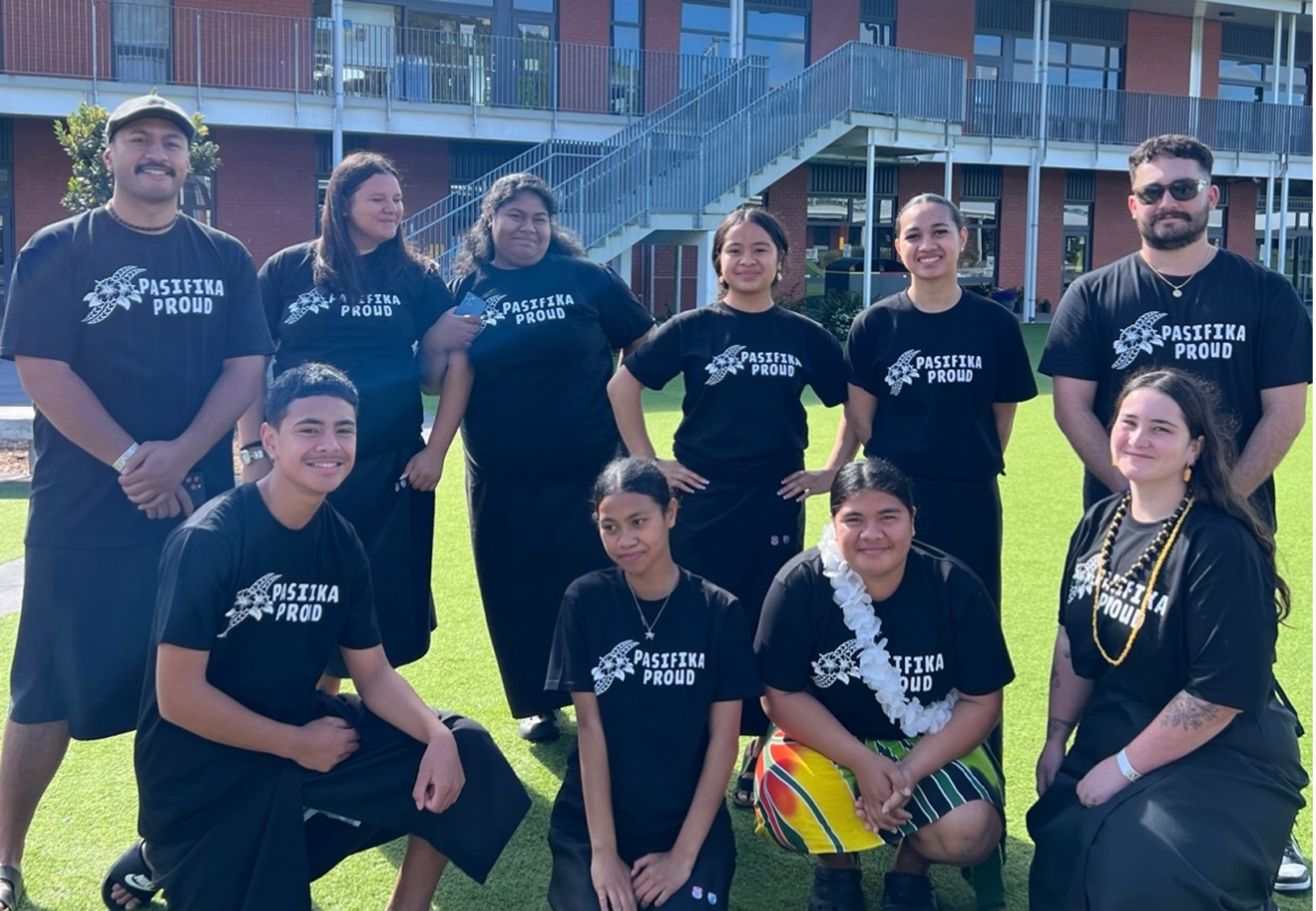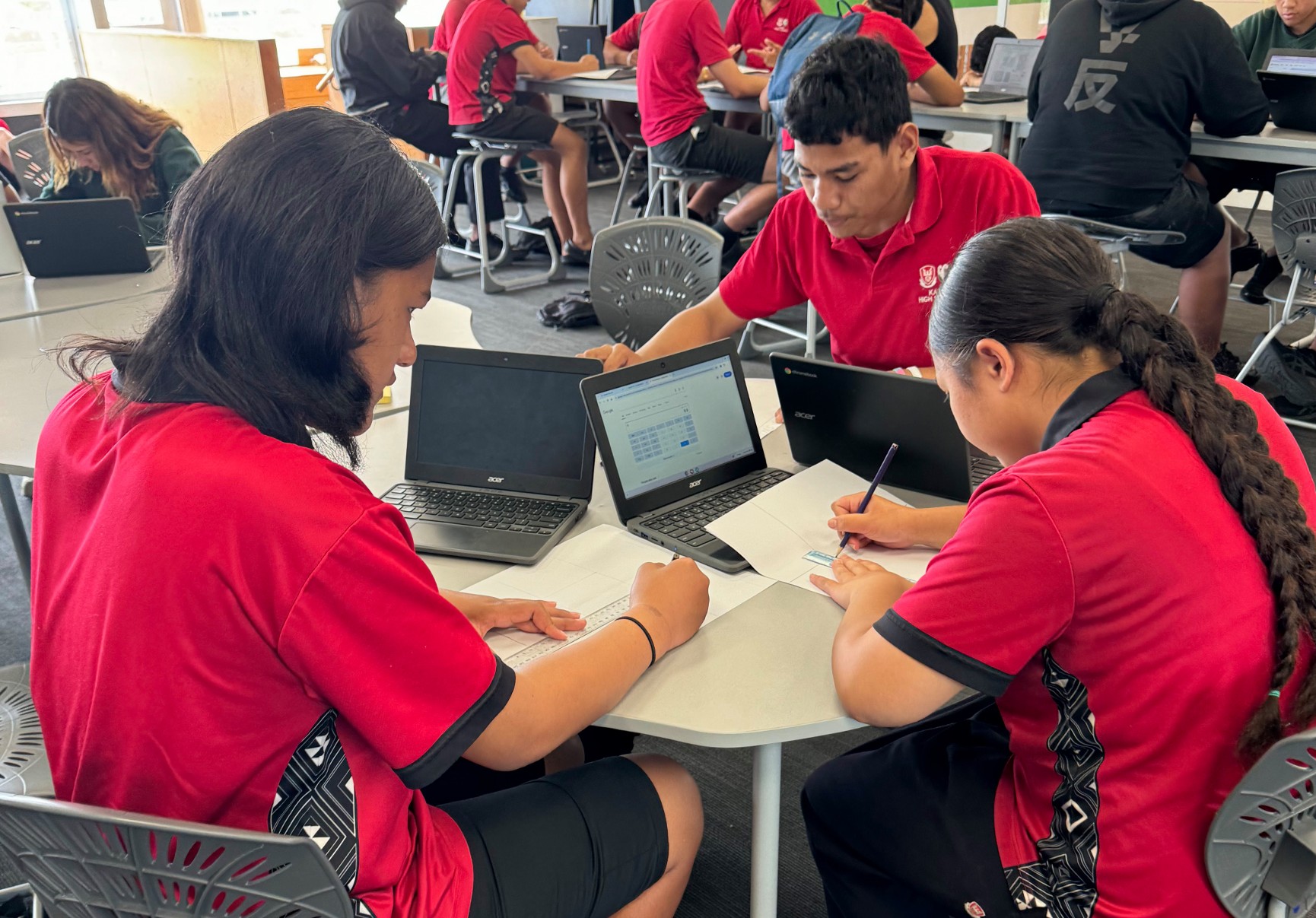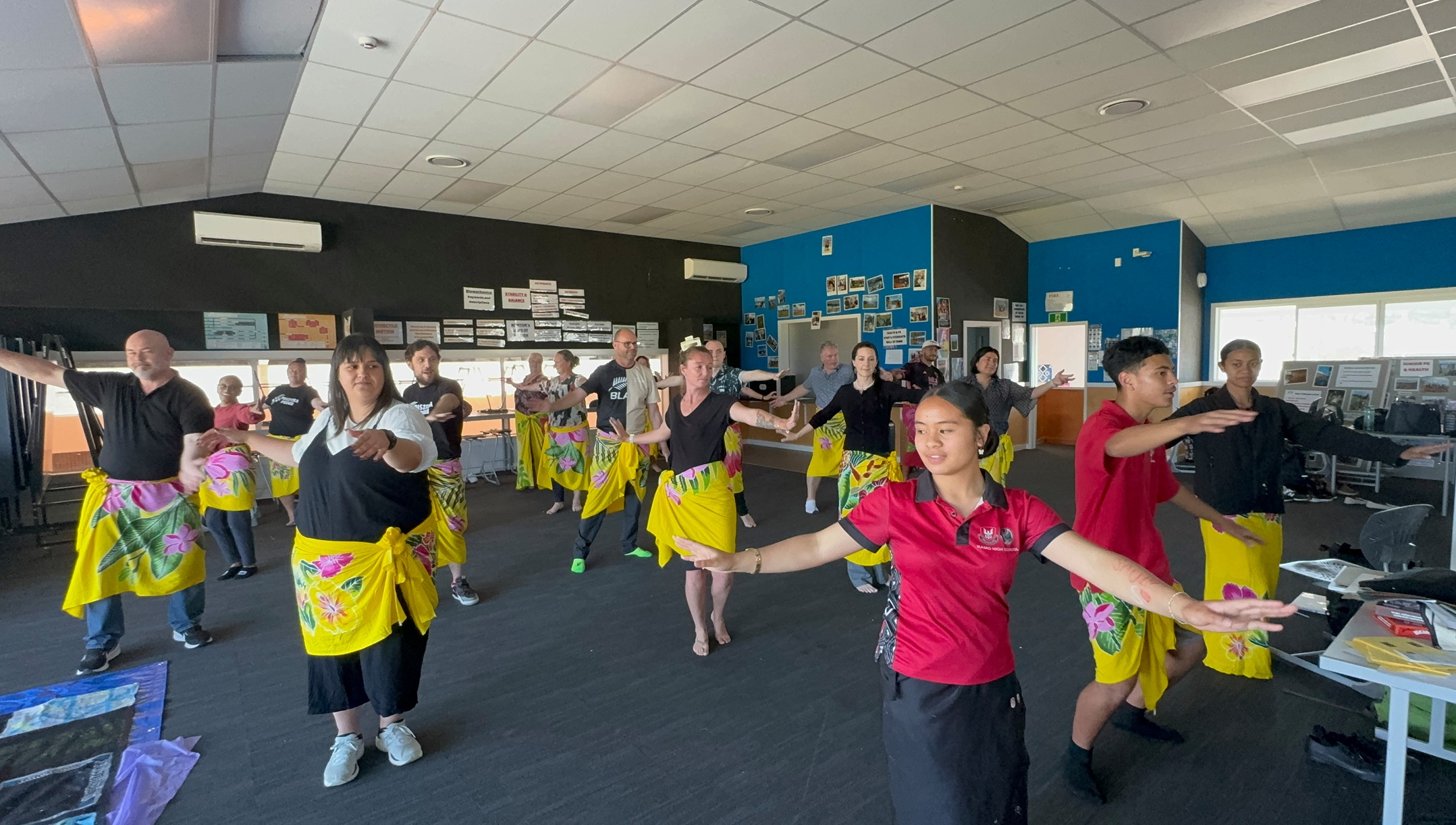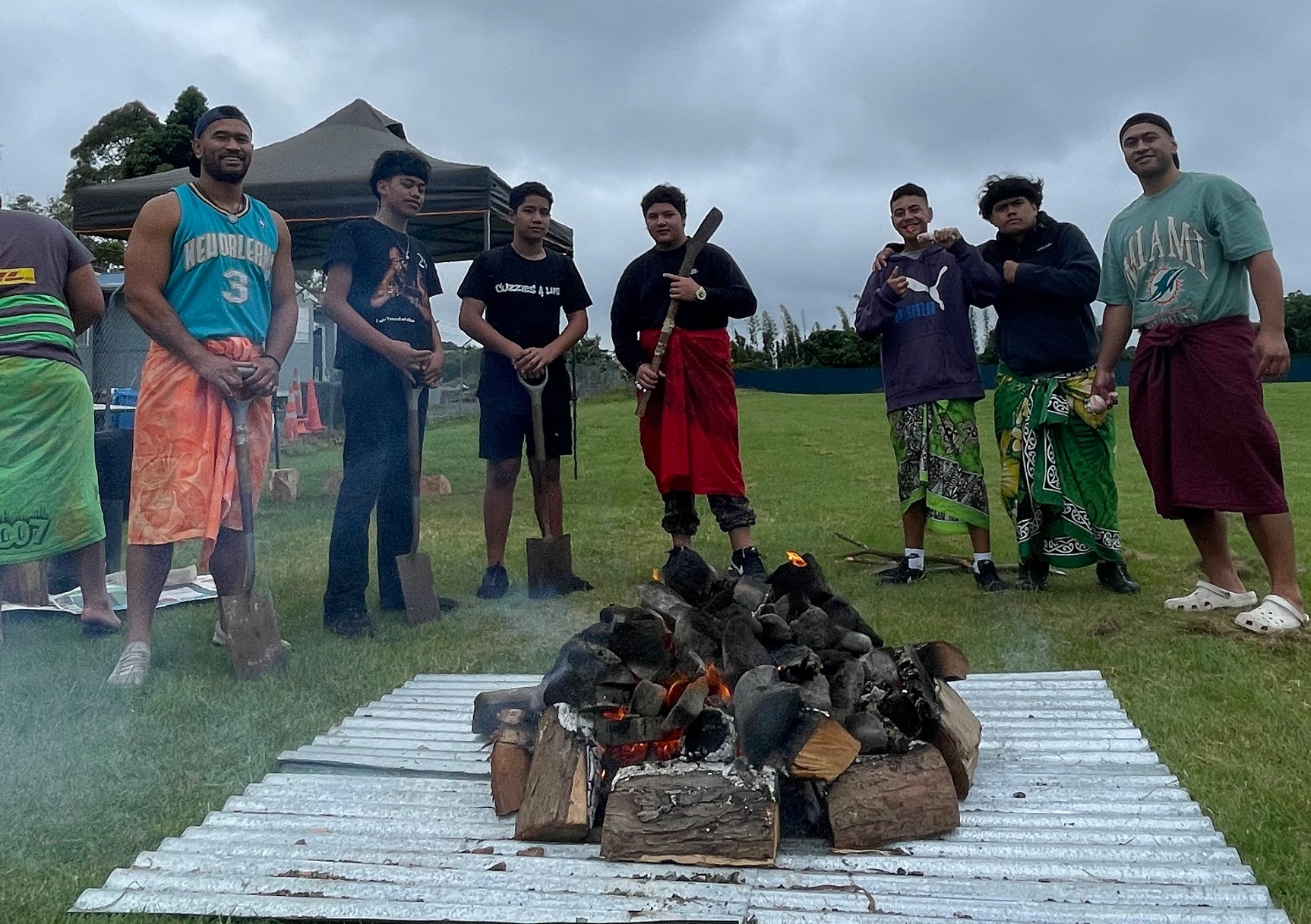Pacific Northland Collective | From Engagement to Outcomes Te Kamo High School Unlocks Pacific Potential Through Collective Action
Through the Pacific Northland Collective and support from Pasefika Proud, Te Kamo High School is driving measurable improvements in student attendance, wellbeing, and engagement backed by strong community partnerships and a clear outcomes focus.

When Principal Natasha Hemara saw a lack of Pacific mentorship at Te Kamo High School, she didn’t just identify a gap, she acted. Drawing on a deep understanding of her student body and a commitment to meaningful outcomes, she reached out to local leaders to help bridge cultural connection with educational achievement.
“We saw attendance improve. Engagement improve. For some of our students, this was the first time all year they were consistently showing up to school,” Natasha explains.
The school joined forces with Tokotoko Solutions and Whangārei F45 to form the Pacific Northland Collective, creating new pathways for Pacific students through mentorship, identity, and access. What began as a community project evolved into a long-term vision for wraparound support.
Through a pilot programme called Pasifika Proud, students were encouraged to lead, participating in cultural dance, cooking, and collective projects that gave back to their communities. Even when storms cancelled their chance to perform at Polyfest, they were invited to share the stage at another local festival alongside the school’s kapa haka group.
“What started as a spark has become a collective of people supporting our students.”

Recognising the need for consistent cultural support, the school employed Pat Elia originally through a Ministry of Education pilot to prioritise Pasifika student engagement. While the role wasn’t formally set up for cultural mentorship, Te Kamo made space for it.
“My role as a Tū Whakaritorito mentor is more than just academic support it’s about walking alongside our Pasifika students in every part of their journey,” says Pat. “It’s deeply meaningful to uplift our young people, to help them see the strength in where they come from, and to believe in where they’re going.”
The impact has extended beyond students. Pat has helped bridge the vā, the sacred relational space, between school, student, and aiga.
“When that vā is strong, the whole community benefits. Families feel more welcome and involved, especially when they see their values and languages respected in the school space.”

His work builds on trust, consistency, and cultural understanding.
“Trust is the foundation for everything. I show up in school and community spaces, listen more than I speak, and centre the student’s wellbeing in every interaction.”
Behind the scenes, Pathways Advisor Grant Angus supports students’ long-term futures. His role involves personalised academic mentoring, gateway placements, and helping students set goals and track credits- keeping NCEA achievement at the forefront.
“We help Pasifika learners understand what success can look like for them in their subjects. Gateway placements connect them with the wider community and help them explore pathways post-school,” says Grant.
One student, placed in a gateway role, impressed their employer so much they’ve already been offered full-time work after Year 13, an opportunity the company is willing to hold open until the student finishes school.
“He’s on target for NCEA Level 3 and UE. This is the kind of real-world outcome that motivates learners and whānau alike.”

Grant’s background research also informs his approach.
“Family values are critical when working with Pasifika. I walk alongside the whole family, and we co-construct decisions about subjects and aspirations in a mana-enhancing way. It’s about unlocking what their future could look like.”
With support from Pasefika Proud and Sport New Zealand, the school has also introduced “activations” like the Pacific dance group now involving over 30 students. A year ago, that group didn’t exist.
“That’s a significant shift. And if we want it to last, we must measure what matters,” Natasha adds.
The school doesn’t just respond to cultural needs, it tracks it. Natasha described the use of engagement dashboards, outcome data, and anecdotal evidence to guide decision-making.

“We gather engagement data year by year and month by month. We’ve got some hugely positive outcomes.”
Te Kamo is also shifting how schools relate to their communities. They’re not just inviting families in for ceremonies they’re offering the school itself as a venue.
“I said, ‘Well, have you guys got a space for church?’ They said no. I said, ‘Well, you can have our school until you get settled.’ It’s just about always seeing an opportunity.”
As Pacific families continue to move to Northland, the school’s enrolment is growing and so is its visibility.
“We’re developing. This is all new. But what we’ve recognised is that all of us have really good intentions and we want the best. So, the value set is the same.”
The school is now preparing to co-host a community hui at Fale Pacifica, where families will meet Tokotoko Solutions, F45, and Te Kamo staff together, as a unified front.

“It’s not about one organisation; it’s about the community. We’re here to support. And I want our people in the best employment positions, so we need to provide upskilling and mentorship.”
Natasha is clear-eyed about what she wants to see next.
“I’d like to see our Pacific learners thriving, both in personal and academic success. We had our first in a while, excellence attainment for NCEA last year. I want more of that.”
Asked what she’d want readers to take away, Natasha is direct:
“It’s not just about handing kids over to schools and saying, ‘You manage them.’ Families need to stay involved so that we know together what we want better for our kids. That’s how transformation happens.”
The Pacific Northland Collective is made up of Tokotoko Solutions, F45 Whangārei, and Te Kamo High School.
With support from Pasefika Proud, the Collective is trialling a new model of Pacific-led, outcomes-focused support for families in Northland, from work readiness and education to health and wellbeing.
Pacific populations in Northland represent high needs, particularly in the areas of housing, health, and economic opportunity, though the largest Pacific population resides in Auckland. Northland shows higher rates of Pacific youth and older adults, alongside a higher dependency ratio compared to the national average for Pacific peoples, suggesting that a larger portion of the population may require more social and economic support. The region faces challenges such as housing affordability, a lack of accessible healthcare services, and disparities in education and employment outcomes.
Northland Pacific Population and Employment (PDF 51 KB)